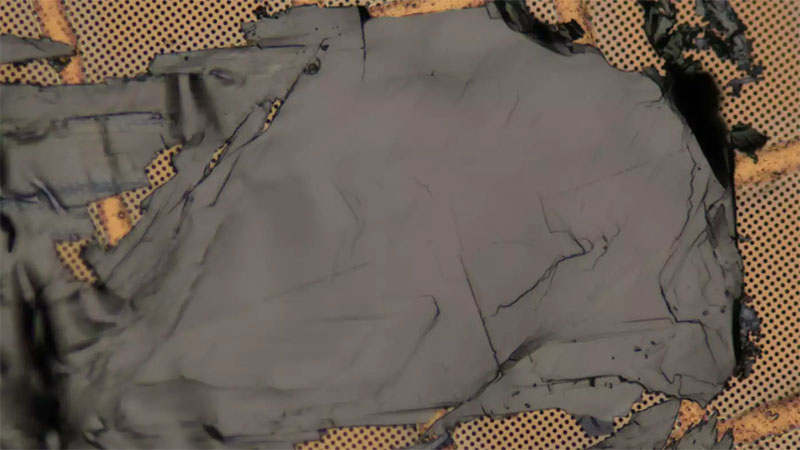| Jul 07, 2023 |
Laser pulse creates exotic order in quantum material
(Nanowerk News) Water flows, ice is rigid – this clear difference between the liquid and solid state of substances is part of our everyday experience. It follows from the very regular arrangement of atoms and molecules in crystalline solids, which is lost when they melt. Less clear, however, is the structure of “liquid crystals“ – highly interesting states that combine order and disorder in such a way that important applications such as LCDs (liquid crystal displays) are possible.
|
|
Researchers from the Max Planck Institute (MPI) for Multidisciplinary Sciences in Göttingen, in collaboration with colleagues from Kiel University (CAU), have now successfully created a state in a crystalline material that – similar to the structure of liquid crystals – can be described as neither clearly liquid nor clearly crystalline.
|
 |
| A layered crystal on a sample carrier made of gold. The material studied consists of thin layers of tantalum and sulfur atoms stacked in loose association. The image displays a region with a size of around 300µm x 200µm. (Image: Till Domröse=, Max Planck Institute for Multidisciplinary Sciences)
|
|
The studied layered crystal, grown by Kai Rossnagel’s team in Kiel, is characterized by a minimal distortion of the crystal structure at room temperature. This is due to the special structure of the crystal, in which thin layers of metal and sulfur atoms are stacked on top of each other and only weakly bound. If these layers are now bombarded with ultrashort laser flashes, the distortion changes its orientation within a trillionth of a second, abruptly increasing the electrical conductivity of the material. Although both types of distortions have an ordered structure and associated crystalline properties, a highly disordered state can be observed during the transition. |
|
“After exciting the material with light, the atoms in the crystal structure have yet to find their new, slightly different positions. This transforms the material into an unusually disordered, so-called hexatic state,” says Till Domröse, PhD student at MPI and first author of the study now published in the journal Nature Materials ("Light-induced hexatic state in a layered quantum material"). “This state is otherwise mainly observed in liquid crystals. In our experiments, however, it is extremely volatile and has already disappeared after the fractions of a nanosecond.”
|
|
Making the hexatic state visible placed high demands on the measurement technology used. On the one hand, for example, a very fast temporal resolution is required to take a sufficiently short snapshot. On the other hand, the structural changes in the material are so subtle that they can only be seen with a very high sensitivity to atomic positions. Electron microscopes in principle provide the necessary spatial resolution, but are typically not fast enough.
|
|
In recent years, the Göttingen team led by Max Planck Director Claus Ropers has closed this gap by developing an “ultrafast” electron microscope capable of imaging even unimaginably rapid processes in the nanocosmos. “This microscope was also used in these experiments and enabled us to capture the unusually ordered phase and its temporal evolution in a series of images,” Ropers explains. “At the same time, we developed a new high-resolution diffraction mode that will be essential for studying many other functional nanostructures."
|

